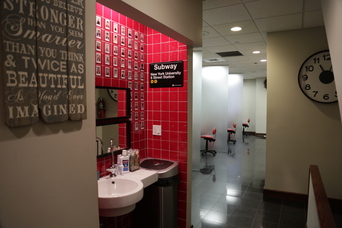If you have a gummy smile, you may have wondered if braces can correct the problem. In some instances, yes, braces can fix a gummy smile. Although braces and Invisalign® may not be effective in repairing all gingival smiles, it is definitely worth asking your orthodontist.
Defining a Gummy Smile
It is difficult to precisely define what a gummy smile is because it is in the category of “eye of the beholder.” What that means is that it varies depending on how one feels about their appearance.
Many people think of a gummy smile as having small teeth, although that is not precise. A smile is generally thought to be gummy if 3 to 4 millimeters of gum tissue are visible when smiling. Different cultures also have differing opinions on what a gingival smile is.
Although only a small percentage of both men and women suffer from what they consider a gummy smile, it is a condition that creates self-consciousness. If you don’t like the way your smile appears, then it would benefit you to explore options to correct it.
Causes of a Gummy Smile
The cause of a gummy smile may be different for each individual. Some of the potential causes can be attributed to:
- Size of the lips and how they move when smiling
- Misaligned teeth (malocclusions)
- Improper jaw growth
- Health conditions or medications
- Genetic traits
In some instances, surgery may be necessary to correct an excessive display of gum tissue.
When the problem is a hyperactive upper lip, Botox® can be helpful in restricting the lip movement to avoid showing gums. Botox is not a permanent solution and requires treatment every few months. Repositioning surgery is a more permanent solution.
Gingival hyperplasia is the excessive growth of gum tissue. This problem can result from poor oral hygiene or certain medications. Gum contouring or surgery can correct the growth.
Although we have discussed the most extreme remedies, in many cases, braces, Invisalign, or other orthodontic procedures can help.
Why Fix a Gingival Smile
Most people that seek to correct a gingival smile do it for cosmetic reasons because they are unhappy with their smile’s appearance. There are some health reasons that also would call for correction.
View this post on Instagram
There is no doubt that reconfiguring a gummy smile can create a boost to self-esteem and confidence.
Can Braces Fix a Gummy Smile?
Although braces will not be able to correct a gummy smile in every circumstance, they can work well especially in cases where the problem is orthodontic.
Traditional braces do not make gums recede or magically make more of the teeth appear below the gum line. The way braces help with a gingival smile is by supplying force to the teeth in an upward manner. Repositioning the teeth into proper alignment causes the gum tissue to adjust, which makes it less noticeable.
Other Methods to Correct a Gingival Smile
Aside from braces and Invisalign®, there are several other methods available to correct a gummy smile. Alternative methods can be invasive (surgery), non-invasive (injections), or appliance-based (TADs).
Unfortunately, repairing a gummy smile is often not eligible for coverage under dental insurance plans unless the cause of the problem affects a patient’s health.
Oral Surgery
Nobody likes the thought of oral surgery, but sometimes it is necessary. In some cases of a gingival smile, surgery may be the best option to correct the aesthetics quickly and effectively.
Removing a small portion of connective tissue from the underside of the lip can help with lip hypermobility. The procedure requires only a local anesthetic. A periodontist or oral surgeon performs the minor surgery which normally takes less than an hour. Lip repositioning prevents the elevator muscles from raising the upper lip as high. Recovery takes approximately one week.
Gingivectomy (also known as gum contouring) uses a scalpel or laser to remove and reshape the tissue above each tooth. This procedure often requires more than one appointment. The surgeon or periodontist works while the patient is under local anesthesia. The permanent removal of excess tissue exposes more surface area for each tooth. Recovery takes about one week.
Orthognathic Surgery
When repositioning the jaw surgically is necessary, the procedure is called orthognathic surgery. Because the teeth must be properly aligned prior to surgery this process may begin with either braces or Invisalign treatment.
Unlike procedures done in the office under local anesthesia, this process does require general anesthesia. Monitoring after surgery may be necessary, requiring a short stay in a hospital or overnight clinic. The procedure is performed by a maxillofacial surgeon. This is considered major surgery and may require a recovery period of 6 to 12 weeks.
In order to balance and align the lower and upper jaws, this procedure may require adding to the jawbone or removing bone to reposition the jaw.
It is important to note that House of Orthodontia will attempt every non-surgical treatment method available. If you think that surgery is your only option, please see Dr. Alikhani or Dr. Lien for a second opinion.
Less Intrusive Methods
There are less intrusive methods available that do not involve oral or orthognathic surgery.
Temporary Anchorage Devices (TAD) have been useful in treating some cases of a gummy smile. These small titanium screws are implanted and act as anchors to facilitate efficient tooth movement.
Although only a temporary solution, injections of hyaluronic acid fillers and botulinum toxin (Botox) can create results. These procedures do require repeating every few months in order to maintain the desired effect.
Injections temporarily paralyze a portion of the upper lip to keep it from raising high enough to expose gum tissue. There may be physical side effects that you should fully understand before undergoing injection procedures.
Discuss Your Options at House of Orthodontia
When it comes to patient-friendly corrective orthodontics, House of Orthodontia leads the pack. With an emphasis on non-surgical solutions, Dr. Mani Alikhani and Dr. Thomas Lien are considered leaders among their peers. Even in complex cases, they have been instrumental in solving orthodontic problems with non-surgical procedures.
If you are ready to schedule an appointment where patient comfort and compassion are a priority, contact House of Orthodontia. You may use your SmartPhone to schedule via our website or call one of our two locations:
Brooklyn — 929-357-2208
New York — 212-392-4789
Our appointment coordinator will assist you in setting up your complimentary consultation.



